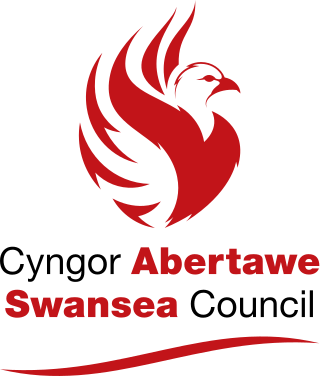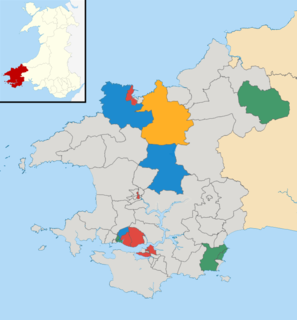| |||||||||||||||||||||||||||||||||||||||||||||||||||||||||||
All 1,270 seats to 22 Welsh councils | |||||||||||||||||||||||||||||||||||||||||||||||||||||||||||
|---|---|---|---|---|---|---|---|---|---|---|---|---|---|---|---|---|---|---|---|---|---|---|---|---|---|---|---|---|---|---|---|---|---|---|---|---|---|---|---|---|---|---|---|---|---|---|---|---|---|---|---|---|---|---|---|---|---|---|---|
| |||||||||||||||||||||||||||||||||||||||||||||||||||||||||||
The 1999 Welsh local elections, were held on 6 May in 22 local authorities, as part of the wider 1999 UK local elections.
| |||||||||||||||||||||||||||||||||||||||||||||||||||||||||||
All 1,270 seats to 22 Welsh councils | |||||||||||||||||||||||||||||||||||||||||||||||||||||||||||
|---|---|---|---|---|---|---|---|---|---|---|---|---|---|---|---|---|---|---|---|---|---|---|---|---|---|---|---|---|---|---|---|---|---|---|---|---|---|---|---|---|---|---|---|---|---|---|---|---|---|---|---|---|---|---|---|---|---|---|---|
| |||||||||||||||||||||||||||||||||||||||||||||||||||||||||||
The 1999 Welsh local elections, were held on 6 May in 22 local authorities, as part of the wider 1999 UK local elections.
| Party | Votes [1] | % | +/- | Councils | +/- | Seats | +/- | |
|---|---|---|---|---|---|---|---|---|
| Labour | 338,470 | 34.4% | 8 | 563 | ||||
| Independent | 187,345 | 19.1% | 3 | 295 | ||||
| Plaid Cymru | 179,212 | 18.2% | 3 | 205 | ||||
| Liberal Democrats | 132,091 | 13.4% | 0 | 98 | ||||
| Conservative | 99,565 | 10.1% | 0 | 75 | ||||
| Green | 8,328 | 0.8% | 0 | 1 | ||||
| Other | 37,788 | 3.8% | 0 | 33 | ||||
| No overall control | n/a | n/a | n/a | 8 | n/a | n/a | ||
In all 22 Welsh councils the whole of the council was up for election.
This section is empty.You can help by adding to it.(August 2018) |
Since 1 April 1996, Wales has been divided into 22 single-tier principal areas for local government purposes. The elected councils of these areas are responsible for the provision of all local government services, including education, social work, environmental protection, and most highways. Below these there are also elected community councils to which responsibility for specific aspects of the application of local policy may be devolved.

The National Assembly for Wales is the devolved parliament of Wales, with power to make legislation, vary taxes and scrutinise the Welsh Government. The Assembly comprises 60 members, who are known as Assembly Members, or AMs. Since 2011, Members are elected for five-year terms under an additional members system, in which 40 AMs represent geographical constituencies elected by the plurality system, and 20 AMs represent five electoral regions using the d'Hondt method of proportional representation. Typically the largest party in the Assembly forms the Welsh Government.

Local elections took place in much of the United Kingdom on 6 May 1999. All Scottish and Welsh unitary authorities had all their seats elected. In England a third of the seats on each of the Metropolitan Boroughs were elected along with elections in many of the unitary authorities and district councils. There were no local elections in Northern Ireland.
Politics in Wales forms a distinctive polity in the wider politics of the United Kingdom, with Wales as one of the four constituent countries of the United Kingdom (UK).

The 1995 United Kingdom local elections took place on 4 May 1995. The Conservative Party lost over 2,000 councillors in the election, while the Labour Party won 48% of the vote, a record high for the party in local elections.

The City and County of Swansea Council is the governing body for one of the Principal Areas of Wales covering Swansea, Gower and the surrounding area. The council consists of 72 councillors representing 36 electoral wards.

Gwynedd Council is the governing body for the principal area of Gwynedd, one of the subdivisions of Wales within the United Kingdom. The Council administrates internally through the medium of Welsh.
Welsh Labour is the part of the United Kingdom Labour Party that operates in Wales. Labour is the largest and most successful political party in modern Welsh politics, having won the largest share of the vote at every UK General Election since 1922, every Welsh Assembly election since 1999, and each European Parliament election from 1979 until 2004, as well as the 2014 one.
In addition to community councils, Wales has elections to four tiers of government: 22 unitary local authorities, the National Assembly for Wales, the United Kingdom Parliament and the European Parliament.
The Welsh Conservative Party is the part of the Conservative Party that operates in Wales. At general elections, it is the second-most popular political party in Wales, having obtained the second largest share of the vote at every general election since 1931. At Welsh Assembly elections, the Conservatives are the third-most supported party. They hold one of the four Welsh seats in the European Parliament, eight of the forty Welsh seats in the UK Parliament, and twelve of the sixty seats in the National Assembly for Wales.

The 2008 United Kingdom local elections were held on 1 May 2008. These elections took place in 137 English Local Authorities and all Welsh Councils.

Lindsay Geoffrey Whittle is a Welsh politician, a member of Plaid Cymru and an Assembly Member (AM) for the South Wales East electoral region in the National Assembly for Wales 2011−16.

The 2012 United Kingdom local elections were held across England, Scotland and Wales on 3 May 2012. Elections were held in 128 English local authorities, all 32 Scottish local authorities and 21 of the 22 Welsh unitary authorities, alongside three mayoral elections including the London mayoralty and the London Assembly. Referendums were also held in 11 English cities to determine whether or not to introduce directly elected mayors.

The 2013 United Kingdom local elections took place on Thursday 2 May 2013. Elections were held in 35 English councils: all 27 non-metropolitan county councils and eight unitary authorities, and in one Welsh unitary authority. Direct mayoral elections took place in Doncaster and North Tyneside. These elections last took place on the 4 June 2009 at the same time as the 2009 European Parliament Elections, except for County Durham, Northumberland and the Anglesey where elections last took place in 2008.

The fifth election to Pembrokeshire County Council was held on 3 May 2012. It was preceded by the 2008 election and followed by the 2017 election. On the same day there were elections to 20 of the other 21 local authorities in Wales, community council elections in Wales and other elections elsewhere in the United Kingdom
The 2016 Sefton Metropolitan Borough Council election took place on 5 May 2016 to elect members of Sefton Metropolitan Borough Council in England. This was on the same day as other local elections. Sefton is split up into 22 wards, each electing 3 councillors, totalling up to 66 seats. Note, only 22 seats were up for election.
The second election to Merthyr Tydfil County Borough Council following the re-organization of local government in Wales was held on 6 May 1999. It was preceded by the 1995 election and followed by the 2004 election. On the same day the first elections to the Welsh Assembly were held as well as elections to the other 21 local authorities in Wales.
The second election to the City of Cardiff Council following the re-organization of local government in Wales was held on 6 May 1995. It was preceded by the 1995 election and followed by the 2004 elections. On the same day the first elections to the Welsh Assembly were held as well as elections to the other 21 local authorities in Wales. Labour retained a majority of the seats.

The Referendums Act 1997 is an Act of the Parliament of the United Kingdom, which made legal provision for the holding of two non-binding referendums in both Scotland on the establishment of a democratically elected Scottish Parliament with tax-varying powers and in Wales on the establishment of a democratically elected Welsh Assembly. It was introduced to the House of Commons by the then Prime Minister Tony Blair on 15 May, 1997 just two weeks after the landslide Labour victory in the 1997 General Election and was the very first Bill to be presented to the Commons by the Blair Government of 1997-2007. The Act received royal assent on 31 July, 1997.

The 1995 Welsh local elections, were held on 4 May in the 22 new local authorities, as part of the wider 1995 UK local elections.